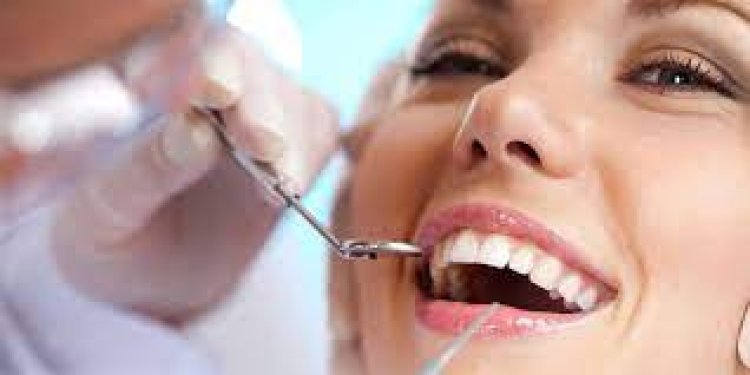What is dental decay
What is dental decay? Occurs when the enamel and dentine of a tooth are weakened by acid attack following consumption of sugary foods or beverages.

What is dental decay?
Dental decay occurs when the enamel and dentine of a tooth are weakened by acid attack following consumption of sugary foods or beverages. The acid creates a cavity (hole) in the tooth over time. "Dental decay" is synonymous with "tooth decay" and is also referred to as "dental caries."
What causes dental decay?
Plaque acids, which eat away at the tooth's enamel and dentine over time, are the root cause of dental decay. Decay damages teeth and may necessitate filling or extraction of the affected tooth.
What is enamel?
Enamel is the tooth's firm, protective outer layer and the hardest portion of the body. It lacks nerves and blood vessels and is therefore insensitive to pain.
What is dentine?
Dentine, which forms the majority of the tooth and rests beneath the enamel, is extremely sensitive to pain. Dentine conceals the tooth's central "pulp."
What is the pulp?
The pulp is a soft tissue which contains blood vessels and nerves and is in the middle of the tooth.
What is plaque?
Plaque is a thin, sticky film that keeps forming on your teeth. It contains many types of bacteria.
Why do my teeth decay?
When carbohydrates in food and beverages react with the bacteria in plaque to form acids, decay occurs. Every time you consume a food or beverage containing sugar, these acids attack the teeth and begin to degrade the enamel. The attacks can last for up to an hour after consuming or drinking, until the natural salts in your saliva cause the enamel to "remineralize" and solidify once more. In addition to sugars, other carbohydrate-containing foods and beverages react with plaque and produce acids. (These are the 'fermentable' carbohydrates: for example 'hidden sugars' in processed food, natural sugars like those in fruit and prepared grains).
Always examine the ingredient list. Generally speaking, anything ending in 'ose' is a sugar, such as sucrose, maltose, etc.
Consuming saccharine or acidic treats and beverages between meals can increase the risk of tooth decay because your teeth are constantly under attack and have no time to recover. It is therefore essential to refrain from consuming sweetened nibbles and beverages throughout the day.
What are the signs of dental decay?
In the early stages of dental decay there are no symptoms, but your dental team may be able to spot a cavity in its early stages when they examine or x-ray your teeth. This is why you should visit your dental team regularly, as small cavities are much easier to treat than advanced decay.
What happens if I have a cavity?
Once the cavity has reached the dentine your tooth may become sensitive, particularly when you have sweet foods and drinks, and acidic or hot foods.
As the decay gets near the dental pulp you may suffer from toothache. If the toothache is brought on by hot or sweet foods this may last for only a few seconds. As the decay gets closer to the dental pulp the pain may last longer and you may need to take painkillers - paracetamol or ibuprofen - to control the pain. You must visit your dental team straight away as the tooth is dying, and you may develop a dental abscess if it is not treated.
What happens if I don't get it treated early?
Toothache is a sign that you should visit your dental team straight away, as it is a warning that something is wrong. If you don't do anything, this will usually make matters worse and you may lose a tooth that could otherwise have been saved.
What areas of my teeth are more likely to decay?
The biting surfaces of the teeth and the surfaces between the teeth are most likely to decay, because food and plaque can become stuck in these areas. But any part of the tooth can be at risk.
What treatment will I need?
If the decay is not too severe, the dental team will remove all decay and fill the affected tooth. Occasionally, the nerve in the center of the tooth can become compromised. In this case, the dentist must perform root canal therapy by extracting the nerve and restoring the tooth with a filling or a crown. If the tooth's decay is so severe that it cannot be repaired, the dentist may have to extract it.
Will I always need a filling?
No. In the very early stages of decay, your dental team may apply a fluoride varnish onto the area. This can help stop more decay and help ‘remineralise' the tooth. However, it is important to follow the cleaning routine your dental team suggest, using a fluoride toothpaste to prevent decay starting again.
Is there anything I can do to protect my teeth against decay?
As each adult molar (back tooth) erupts, a 'pit and fissure sealant' can be used to safeguard the tooth if it is free of decay. The sealant is a plastic coating that fills all the tiny pits and fissures on the tooth's surface, making it simpler to clean. Adults may also undergo this procedure if their teeth are devoid of decay. Your dental team will determine if this is appropriate for you. Children can also have fluoride varnishes applied to their teeth twice a year to reduce the likelihood of tooth decay.
What can I do to prevent decay?
The best way to prevent dental decay is by brushing your teeth thoroughly last thing at night and at least one other time during the day, with a fluoride toothpaste. Make sure that you brush the inner, outer and biting surfaces of your teeth. Using ‘interdental' brushes, or dental floss or tape, also helps to remove plaque and food from between your teeth and where they meet the gums. These are areas an ordinary toothbrush can't reach.
Is there anything else I can do?
Visit your dental team as frequently as they suggest. Consume less saccharine and acidic foods and beverages. Avoid eating munchies between meals to reduce the number of times your teeth are subjected to acid attacks.
Chewing sugar-free gum for up to twenty minutes after a meal stimulates salivation, which helps neutralize any acids that have formed.
Also read: Keep Your Teeth Healthy
How can my dentist and hygienist help me prevent decay?
Your dental team will demonstrate which areas require the most attention when cleansing. In addition, they will instruct you on how to brush properly and clear between your teeth using "interdental" brushes or floss.












